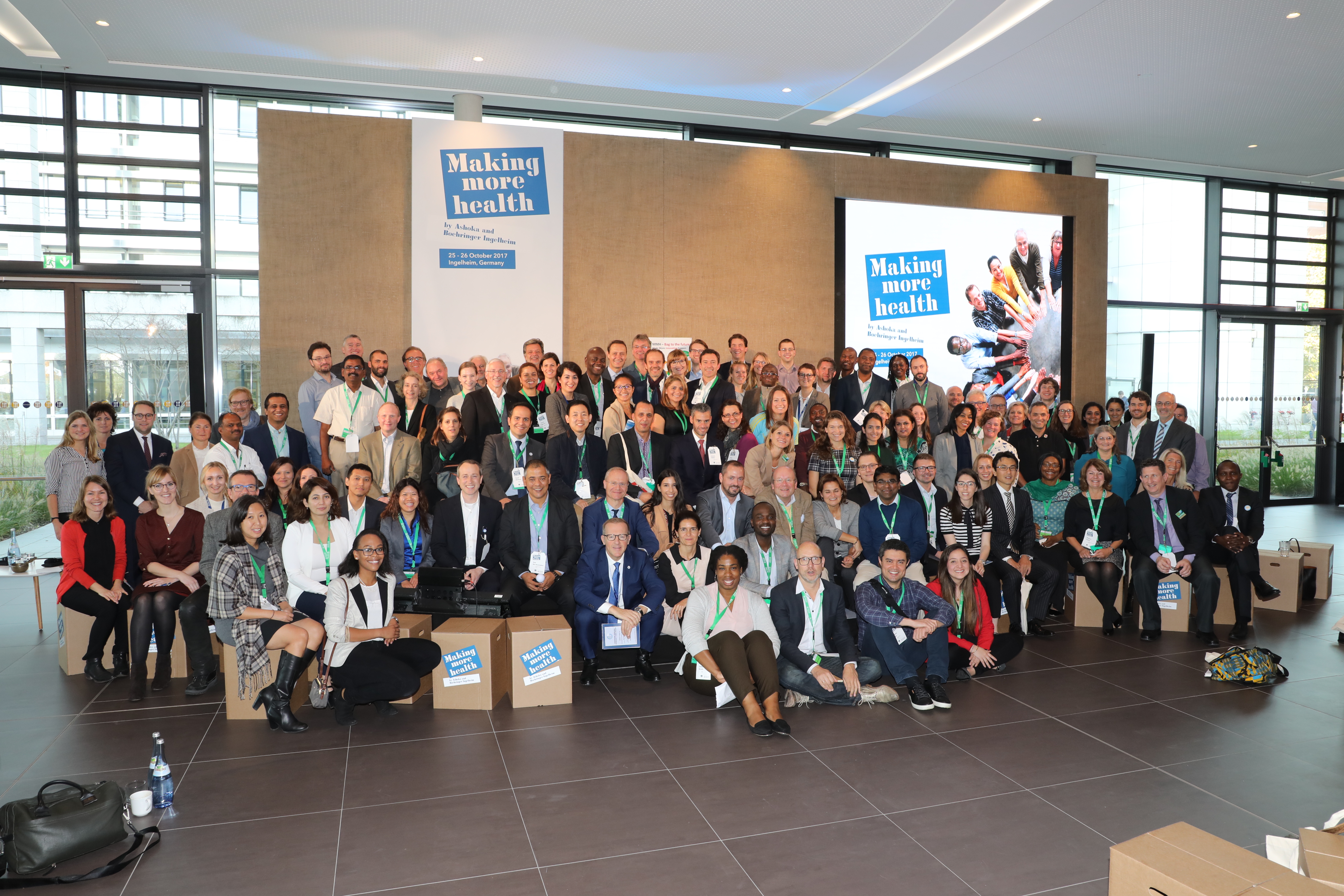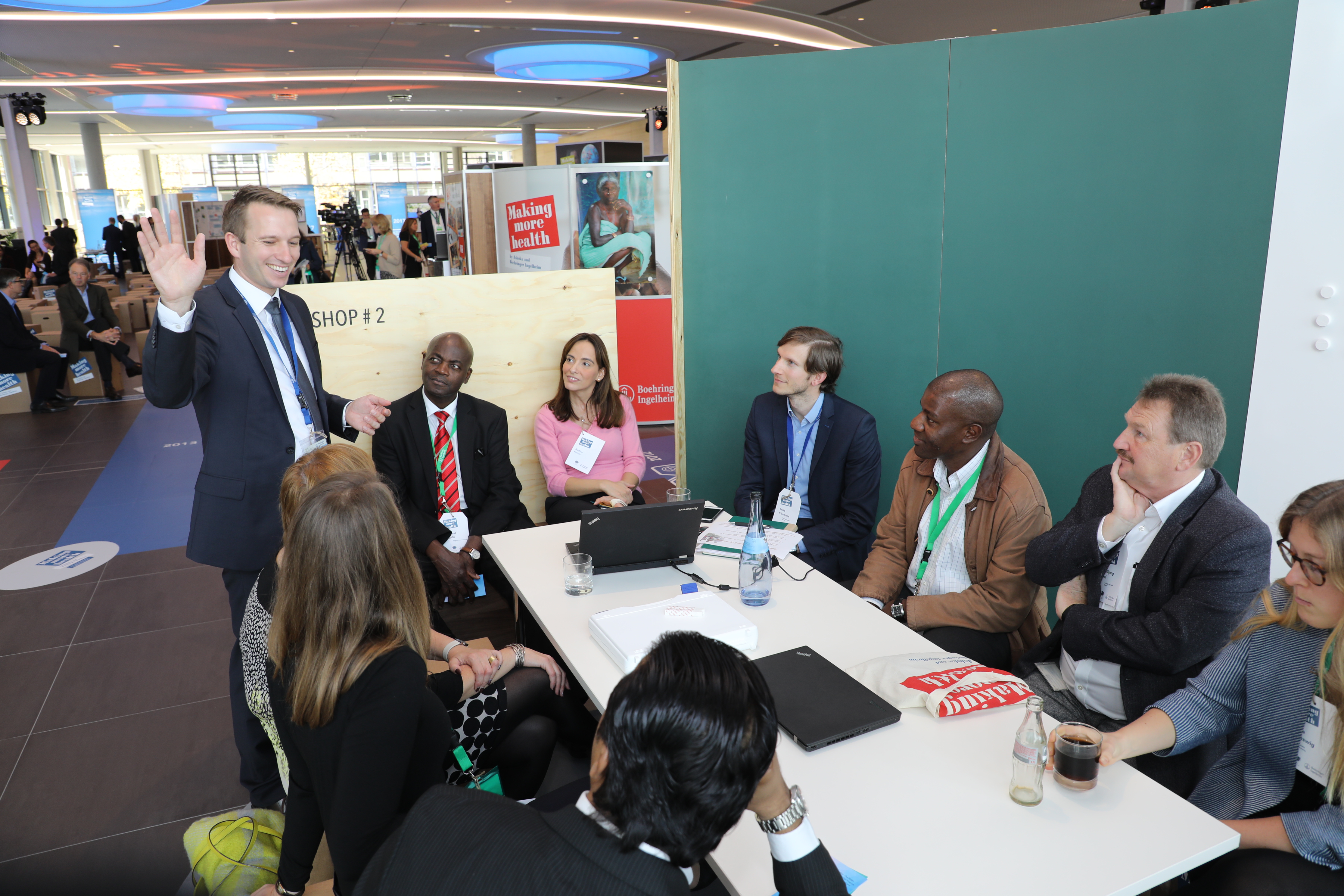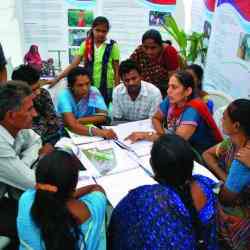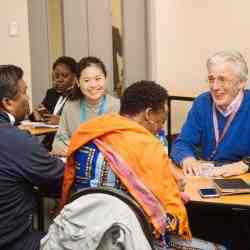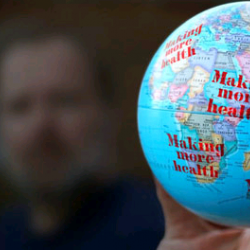We are in a situation in which we have been preparing to scale for a while and of course, MMH is a good ¨badge¨. MMH is relevant for the process of scaling to other countries
In hindsight, the partnership phases can be neatly mapped out, although their development was an ambitious entrepreneurial process:
Phase 1 (2011-2014) focused on identifying the social innovators and supporting them with strategic and financial resources.
Phase 2 (2014-2017) focused on the development of changemaking skills such as intrapreneurship and leadership among Boehringer Ingelheim employees.
Phase 3 (2017-2020) focused on creating stronger local ecosystems and cross-sectoral collaboration between Boehringer Ingelheim, social entrepreneurs, and their local communities by launching collaborative pilots to improve health access.
Phase 4 (2021-2024) will continue expanding the partnership and including additional stakeholders with the purpose of advancing the systemic approach within the healthcare system. Boehringer Ingelheim and Ashoka think more and more about the potential big vision role of the partnership in the field, in showing how long-term commitment can ultimately lead to providing healthcare more effectively
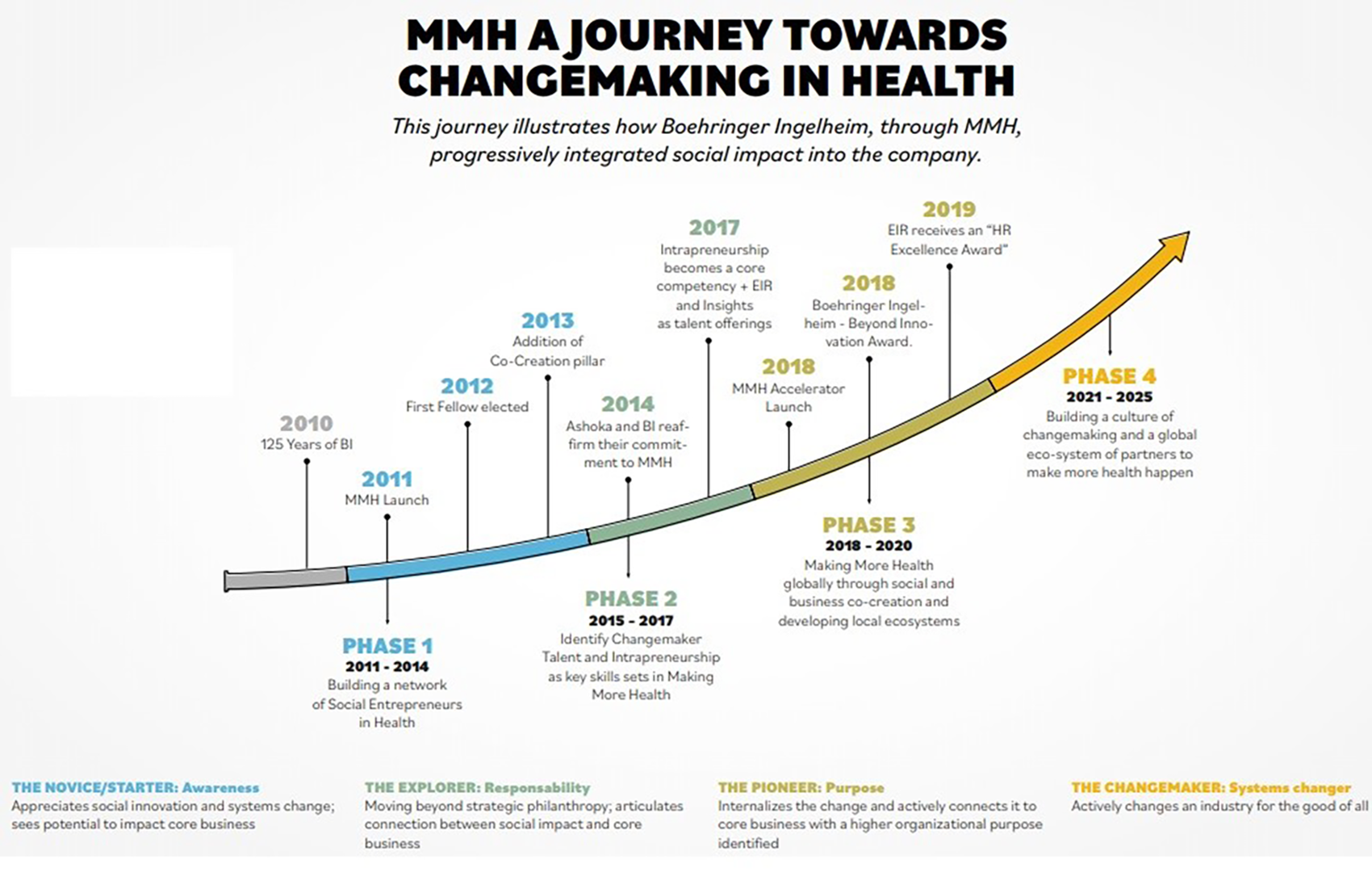
Vision of the partnership
Making More Health aims to create a world where everyone has more health: individuals, animals, and their communities, by fostering and supporting an ecosystem of social entrepreneurial solutions for complex health challenges
Since the very beginning, Making More Health was developed in a genuine co-creation effort, where the two partners are equally involved in defining the evolution of the collaboration. This has meant going beyond the traditional funder–service provider relationship that is usually established between the profit and non-profit sector.
The partnership also aims to answer questions of how to build economic models for companies in the field of healthcare that are also socially sustainable. The intent is not to keep this knowledge within MMH. Rather, the idea is to have MMH promote and share the experience, the ideas, and the results, in order to amplify social innovation in the health field and fundamentally transform practices in the sector.
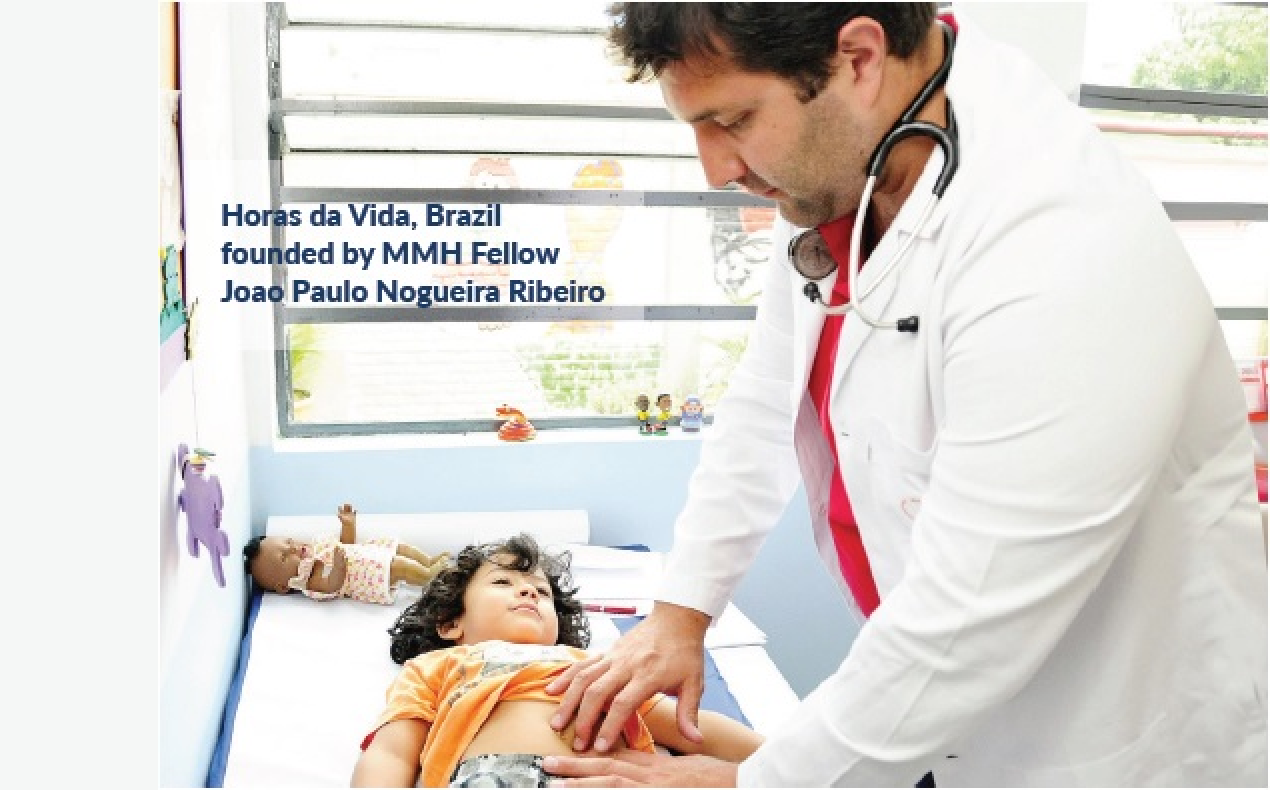
Structure and Strategy
Global framework, local strategies
As a partnership implemented on a worldwide scale, Making More Health is meant to adapt to very different socio-economic contexts. It includes a common global framework and plenty of room for new inputs and testing new projects locally. This has allowed the partnership to develop consistently with its purpose, while successfully adapting to different regions and conditions.
The partnership is structured around 3 main pillars, providing the basis for all the MMH global programs:
Social Innovation:
The partnership selects cutting-edge social entrepreneurs tackling problems related to health field. They receive support to grow the impact of their solutions and provide Ashoka and Boehringer Ingelheim with important insights on innovation and trends in the sector.
Changemaker Culture:
MMH comprises a set of initiatives to engage the company's employees to take action in changemaking. They have the chance to develop leadership skills and can show their intrapreneurial spirit by testing new projects.
Cross-sectoral collaboration:
An MMH Accelerator helps to scale the work of social entrepreneurs increasing access to human and animal health.
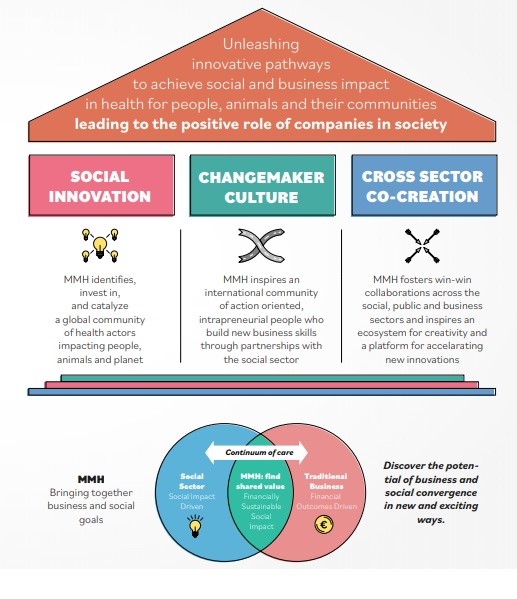
Impact
The initiatives formed under the MMH umbrella have produced concrete results for multiple stakeholders, such as the Ashoka Fellows who are part of the MMH network, the Boehringer Ingelheim engaged employees and both Boehringer Ingelheim and Ashoka as organizations.
But MMH has also boosted the capabilities of local organizations working in the healthcare sector that have joined the partnership’s initiatives. These organizations benefit from enhanced credibility derived from working with MMH and learn from the direct experience of working with a global company.
If you want to learn more about these local organizations and projects, please go here!
